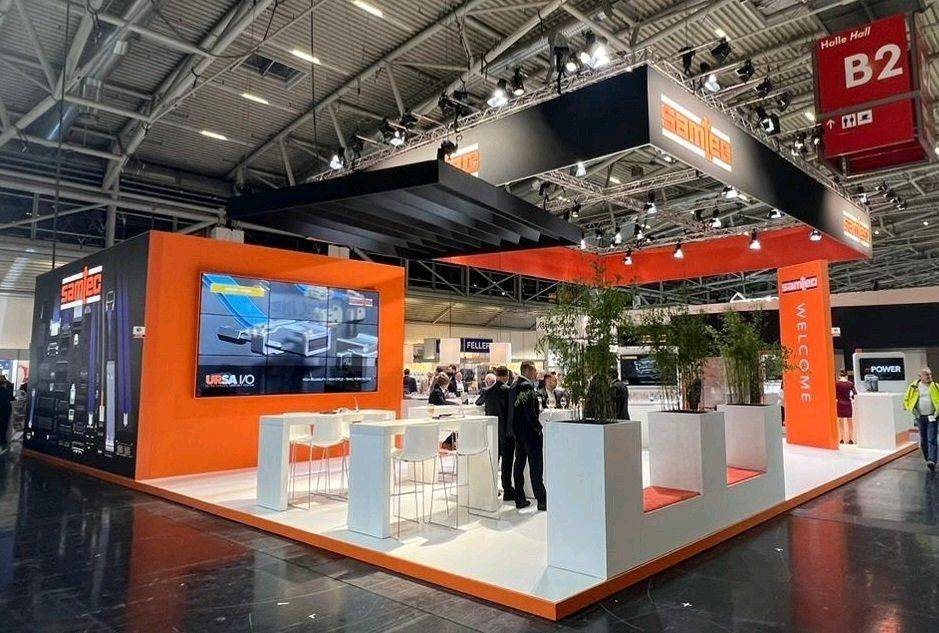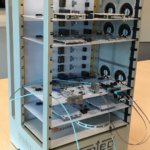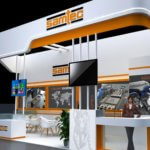Electronica is the premier event for the electronics industry in Europe. While there are many other exhibitions dedicated to specialist markets, some of them quite large, Electronica is regarded by many as the premier event for our industry. Hosted in Munich every 2 years, the 2020 event was held online due to the COVID-19 pandemic.

Electronica returned to Munich last week for the first time in 4 years. Unlike in the USA, the trade fair calendar in Europe has been slower to return to normal. For many of us, Electronica 2022 was the first chance we have had to meet in person for some time.
The world has changed considerably since the last Electronica in 2018. We are still feeling the ongoing effects of the COVID-19 pandemic, in both global manufacturing and the shipping industry. In addition, we are experiencing shortages in a range of components that are impacting all sectors from automobiles to consumer goods.
Growing awareness of environmental concerns is also very much on everyone’s radar. From single-use plastics to the re-use of lithium-ion batteries, social responsibility seems to be a key message for many manufacturers. Here are just a few personal impressions from Electronica 2022 *.
Supply Chain Security
These have truly been challenging times for the electronics industry. The collapse of the air transport industry in the wake of the 2020 pandemic had measurable impacts on our global supply chain. At the same time, we saw a remarkable increase in demand as manufacturers took action to try and secure stock for the unknown future.
Within a year of the start of the pandemic, the supply chain was thrown into turmoil once again as a single event had global effects. It was a sobering realization that a single vessel, grounded in the Suez Canal, could cause huge delays for the shipping industry.
The industry is still reeling from these events, and we continue to see shortages of a range of components. As a result, many manufacturers at Electronica went to great pains to advertise their stability and the plans they have made to ensure future supply. For many, supply chain security has become as important as innovation.
Service providers like Supplyframe are helping designers with dedicated online tools. Their latest Design-to-Source Intelligence (DSI) suite helps solve supply chain issues by making procurement an integral part of the design cycle. It uses artificial intelligence technology to continually collect information about a customer’s chosen parts. It monitors global search activity to highlight parts that are – or will be – in high demand. It monitors availability and stock levels to warn designers if parts are hard to source. It takes input from component suppliers to alert the designer to possible End-of-Life notifications. It also searches through the global distribution channel to determine the most cost-effective source for each part.
Environmental Concerns
The move towards more sustainable technologies was very much in evidence, and electric vehicle charging was an important topic. The key to the widespread adoption of electric vehicles will be fast charging, and this will depend on the ability to transfer more electronics more quickly into the vehicle battery. This in turn will require charging cables that can handle the energy required to conduct fast charging, and the electronics needed to manage the battery efficiently. Connectors will be vital in both roles, and we are not far from the adoption of water-cooled connectors to provide greater current ratings.
Many manufacturers are investigating the potential of smart materials. This is particularly interesting in the field of plastics. Manufacturers have been having an uncomfortable time recently, as the public has embraced the effort to eradicate single-use plastic. However, plastic is an essential role in almost all of the electronics industry. As a result, many manufacturers are focusing on plastics that can contribute to a circular economy. In this concept, plastics are used for as long as possible and are then returned to the manufacturer at the end of their operational life to be recycled and reused.
Suppliers and manufacturers are also embracing alternative energy sources. A few months ago, we looked at the potential of hydrogen and the all-electric society. Many suppliers are actively exploring these alternative solutions in the quest for a more sustainable future.
Final Observations
Electronica is a major event, and there may be many among us who are thankful that it happens only every two years. Nevertheless, it serves as the bellwether that gives us a measure of the health of our industry. With that in mind, it was interesting to note that several of the largest names chose not to exhibit at Electronica this year.
Whether that absence makes a statement about those manufacturers or their view of the exhibition, I feel I am ill-qualified to judge. However, several contacts in the industry have commented that there were fewer visitors to the show than before. It will be interesting to gauge the success of some of the other large shows in Europe. Embedded World will be held in March, and the Hanover Messe will be staged in April – an immense industrial show that dwarves both electronics events.

Samtec was well represented by the European team and ably supported by several US-based associates. Samtec’s latest developments were much in evidence, including high-speed technologies and RF solutions. Events like Electronica remain important events on the promotional calendar and provide Samtec great opportunities to showcase its technologies. Join us next year at Embedded World in Nuremberg and let us show you the latest connector solutions. And we look forward to welcoming you onto the Samtec booth at Electronica 2024 – the premier electronics event.
* Please be aware that these are my personal impressions, and do not represent official Samtec policy.



Leave a Reply